Global Ionosphere Flare Detection System (GIFDS)
PIs: Dr. Norbert Jakowski and Daniela Banyś (German Aerospace Center) Germany
Introduction
Solar radiation bursts or flares may lead to significant changes of Earth’s ionosphere. Additional photoionization causes enhanced ionization which modifies propagation of radio waves traveling through the ionospheric plasma. Solar flares impact concerns both transionospheric as well as reflected radio waves. Whereas the transionospheric impact on radio waves can be measured even in the GHz frequency range on GNSS signals reflected waves are most sensitive in the Very Low Frequency (VLF) range. It has been shown that VLF signals are suitable for a high-quality detection of solar flares. Currently, DLR is preparing the installation of a Global Ionospheric Flare Detection System (GIFDS) in order to issue warnings for mitigating space weather impact on sensitive technologies.
Beginning in April 2007, during the educational project SIMONE (Sun&Ionosphere - MOnitoring NEtwork) under supervision of the DLR_Project_Lab Neustrelitz, numerous sun eruptions have been observed by teachers and pupils from several schools in Germany as illustrated in Fig. 1 (see also ISWI Newsletter Vol.3 No.66, by K.-H. Eckelt).
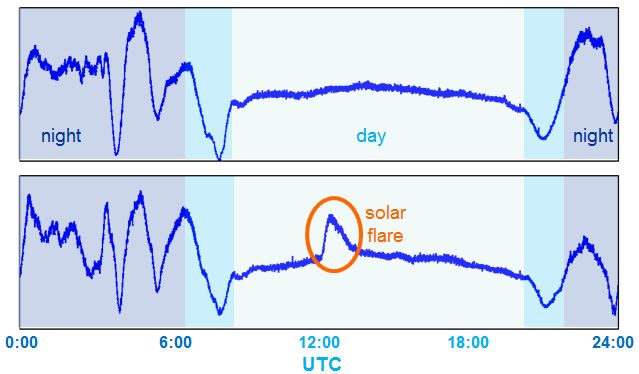
Fig. 1: Typical record of an undisturbed VLF signal (top) in comparison with a VLF signal modified by a solar flare event on the 11th of August 2012.
In 2012, the DLR_Project_Lab transferred its knowledge into the newly founded project SOFIE (SOlar Flares detected by Ionospheric Effects) (http://projectlab-neustrelitz.de/preview/).
For this project an autonomous receiver with automatic data exchange via internet has been developed. The measuring system is remarkably simple: a VLF receiver records the signal strength of a carrier wave emitted by one of available VLF transmitters that were installed e.g. for communication with submarines all over the world.
GIFDS idea
DLR Neustrelitz operates one of four ground stations in NOAA’s Real Time Solar Wind Network that receives solar wind data from NASA’s ACE satellite to get continuous information on solar wind parameters. The global network of ground stations is necessary to guarantee at least one transmission path to be on Earth’s day side. In analogy, a network of VLF receivers is required for the detection of all solar flares hitting the Earth (Fig. 2). Since solar flares cannot be measured by the ACE satellite, the proposed GIFDS will complete the information on the current space weather state.
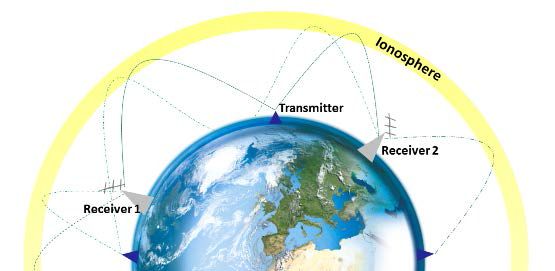
Fig. 2: Principle of ground-based VLF measurements usable in a global flare detection system.
The VLF measurements will immediately be sent to the Ionospheric Monitoring and Prediction Center (IMPC) of DLR Neustrelitz via internet. The IMPC will be the successor of the current SWACI project (http://swaciweb.dlr.de). At IMPC the real time data sets will be merged to get continuous information on the current solar flare state. Based on this information, actual warnings can be issued and distributed to cooperation partners and customers.
Scientific research within the GIFDS project is closely related to educational training via the SOFIE project. SOFIE encourages participation of schools and universities world-wide and hence supports also cultural exchange between different countries and peoples.
Equipment and requirements on infrastructure
GIFDS global receiver network requires a reliable power supply and permanent internet connection. For the training segment SOFIE, a simplified receiver was developed. This shall be distributed around the globe for raising attention to the problems of solar flares. SOFIE receivers can also be used to study their local influences. Whereas SOFIE stations don’t require a permanent internet connection, permanent internet connection is a fundamental request for GIFDS stations whose near real time data serve for detecting solar flares and issuing warnings at IMPC with delays exceeding not more than 60 seconds. The transferred data rate is low (ca. 30kB per day, so about 10GB per year). To get always information from the day-side ionosphere via the VLF radio links, we believe that 4-5 receivers can provide information covering a full 24LT hours period around the globe.
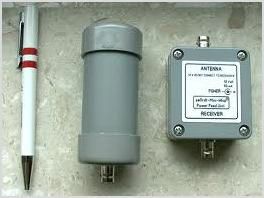
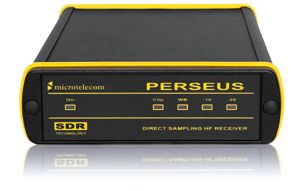
Fig. 3: Technical equipment of a GIFDS station: Perseus SDR receiver (left) and mini-whip antenna (right)
A typical GIFDS ground station consists of a Perseus SDR receiver, a mini-whip antenna, and a standard laptop (Fig. 3). The described equipment and associated software are provided by DLR to cooperation partners. The partners who operate and maintain such a station have full real-time access to their data and to monitoring results. The data of all GIFDS stations will be processed and managed by the IMPC (formerly SWACI) in DLR Neustrelitz. Processing results will be made available to cooperation partners immediately after finishing data processing. IMPC will provide an efficient infrastructure for services like workflow management, data distribution, archiving, user interface, controlling, and error correction.
The first GIFDS receiver was installed in Neustrelitz in February 2013 and is recording multiple channels ranging from 10 to 30 kHz every second. Thus, the measurements are performed with higher sampling rate than the x-ray data of the GOES satellite.
Typical flare (M1) records at three different VLF frequencies and simultaneous X-ray measurements onboard GOES satellite obtained on August 11, 2013 are shown in Fig. 4.
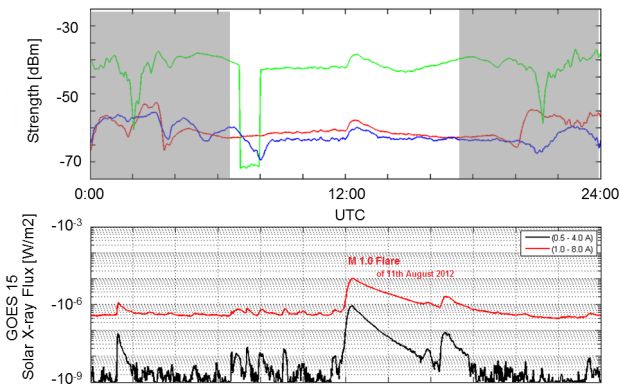
Fig. 4: Comparison of VLF measurements of three different frequencies (top) and X-ray data from GOES satellite (bottom)
.Management plan
The installation of the hardware and the implementation of the software comprising algorithms for a global warning system are coordinated and developed by the DLR. Cooperation partners will host and maintain their GIFDS stations and take care for a permanent data transmission via internet. Cooperation partners have operational access to the data of their hosted receiver and will get back near real time GIFDS results for their own use. Further details of the envisaged close cooperation with GIFDS partners will be discussed in the course of the project. DLR is open for scientific collaboration within the GIFDS project. Scientific research activities in DLR are part of a PhD thesis (Daniela Wenzel).
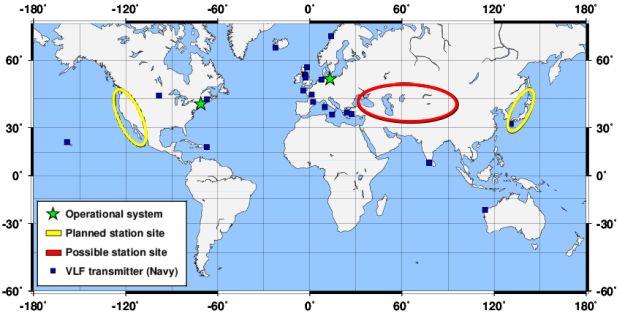
Fig. 5: Preliminary draft of station locations of GIFDS network including location of VLF transmitters recorded in Neustrelitz.
The GIFDS station at DLR site Neustrelitz is running. The second station is planned to be established at Boston College, USA. These two stations shall form the first stage of an operational system that allows learning about adjustments and fine-tuning of measurements (Fig. 5). The third measuring site shall be located at the west coast of USA (Stanford University). The fourth station is intended to be installed in Japan by the end of 2014. If possible, a fifth station should be installed at Northern mid-latitudes between 30 and 90°E. The system shall be fully operational at the beginning of 2015.